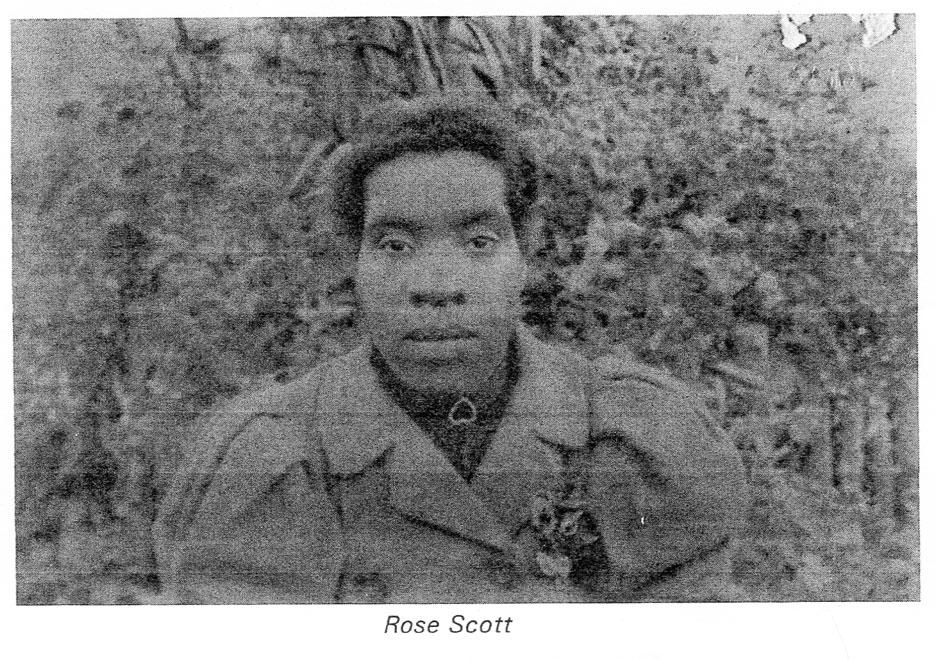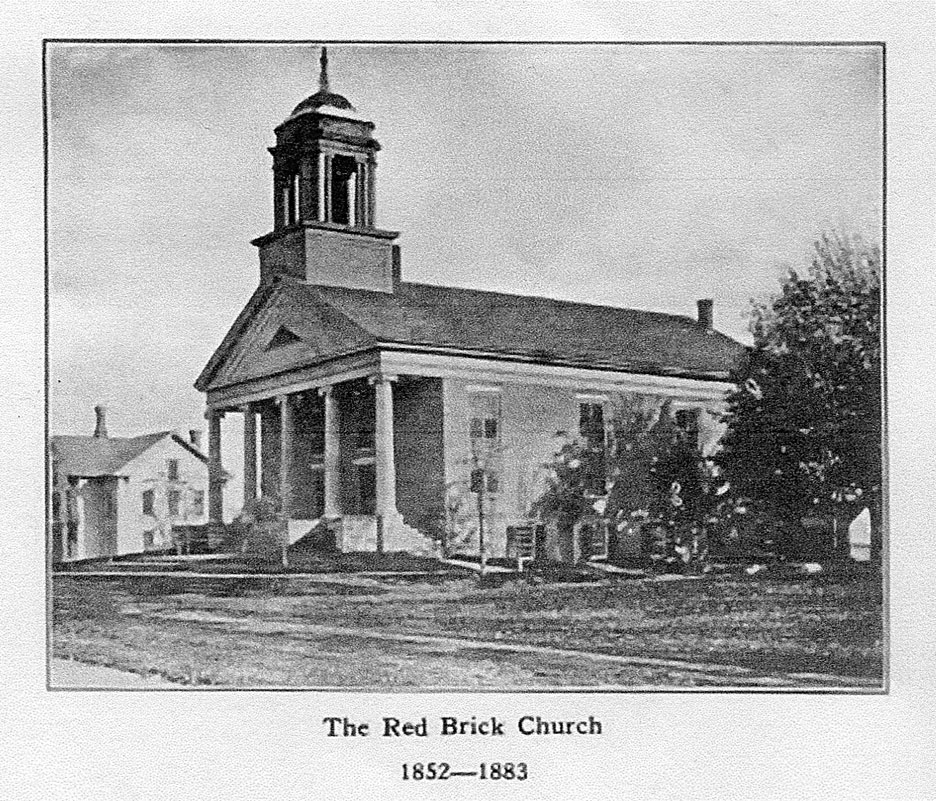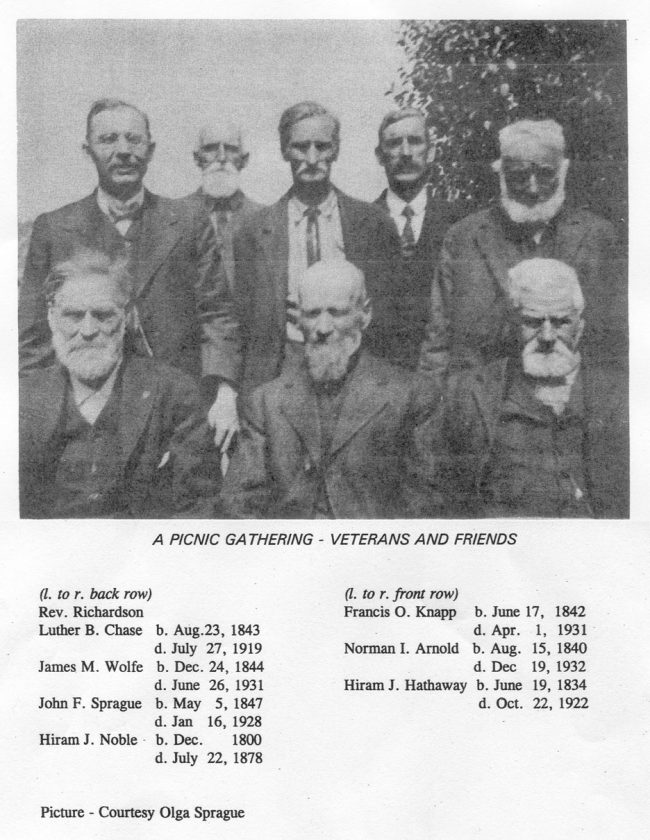The town of Franklin’s black history
- The original church in Malone with the “Underground Railroad” tunnel in the basement, which was preserved when the new church was constructed in 1883. (Photo from the Franklin County Historical Society website)
- This is “Rose Scott, daughter of Walter Scott, wife of James Riley per census 1910.” My column of May 23 carried a picture of Bettie Burns, identified as Rose Scott, because that is the information typed onto the back of the photo. Ms. Burns, according to the town archives, “was a slave girl brought up by Luther Bryant when he returned with her from the Civil War. Bryant was a Lieutenant in the Civil War, serving with the 118th Regiment and a very early resident of Vermontville.” (Photo from town of Franklin archives)

This is “Rose Scott, daughter of Walter Scott, wife of James Riley per census 1910.” My column of May 23 carried a picture of Bettie Burns, identified as Rose Scott, because that is the information typed onto the back of the photo. Ms. Burns, according to the town archives, “was a slave girl brought up by Luther Bryant when he returned with her from the Civil War. Bryant was a Lieutenant in the Civil War, serving with the 118th Regiment and a very early resident of Vermontville.” (Photo from town of Franklin archives)
This is part III of the history of the town of Franklin: a big town with many small hamlets spread all over 175 square miles, with a diverse history since it was created in 1836, including a black community linked to the Underground Railroad and John Brown.
The black community was coming together before the Civil War through the Underground Railroad, and more former slaves came to Franklin after the Civil War.
The following is from Volume V of publications created for the town of Franklin Founder’s Day.
These excerpts are from a story by Thelma Paye Buck Kirstein. When we lived on the Ridge in the 1930s, her dad, Leon Paye, was town justice and a great fiddle player.
“About 1846, in a deed conveying property from Gerrit Smith to John Henry Thomas, the latter became the first black person in the Adirondacks to become a landowner. The property conveyed in Franklin County on that early date is described as the ‘Northwest quarter of Lot 285, containing 40 acres of land’ and in consideration in this case was the sum of one dollar.

The original church in Malone with the “Underground Railroad” tunnel in the basement, which was preserved when the new church was constructed in 1883. (Photo from the Franklin County Historical Society website)
“Apparently, such land was given to ‘deserving’ black people by Mr. Smith, devoted friend of John Brown, famed abolitionist, living part of the time in North Elba, assuming they wished to make their home in the cold Northern climate and avoid slavery.
“At any rate, several years later, in March 1860, records show that John Thomas obtained from Luther Bryant of Vermontville 59 acres in Township 10, Old Military Tract and described as the Southeast quarter of Lot 284 in the Town of Franklin. This time the consideration paid was $60.00.
“These land transactions all took place before the Civil War but information passed on to me by my father claims there many black families living here that were well respected, accepted and seemed to fit nicely into the community following the Civil War.
“One of the most outstanding and well-remembered was Walter Scott, who, according to the 1900 U.S. Census was born in North Carolina 1846. I understood from my father and our good neighbors Hamilton Lamson and Frank Cass that he was brought back from the Civil War by Alfred N. Skiff. Walter married Caroline Hinmans and they raised a family of several children. [It is amazing to me that I remember, with my father, meeting Hamilton Lampson and Frank Cass.]
“According to the town census records, Wallace H. Minnifield was born in South Carolina about 1855. His wife’s name was Cornelia and the raised eight children, 4 boys and 4 girls. They owned property situated on the Vermontville/Onchiota Road, now usually referred to as ‘Swinyer Road,’ where I grew up.

“Further study of census records show that at this time and living nearby was Warren Morehouse, born in Maryland in 1850. His wife’s name was Charlotte and they also raised several children.”
When I was growing up in Saranac Lake, descendants of that Morehouse family lived in the last house on Main Street before reaching the railroad tracks and Pine Street. One of the boys, named Oscar, was the only one I remember. Mrs. Morehouse was a Native American. His dad worked for D. Cohen & Sons Inc., Hardware, 199 Broadway.
–
A Malone connection?
A few years ago, we were guests at a meeting of the Franklin County Historical Society. The meeting was held at the First Congregational Church in Malone. It is located on Main Street, a huge, beautiful stone edifice on the right side of the street as one heads for the fairgrounds. It was built in 1883 and designed by Tristram Coffin, a Boston architect.
The meeting was anything but boring, unless one is not in to history … but here is the kicker: At the conclusion of the meeting, the group was invited to go to the basement.
A small trap door in the concrete floor opened to a tunnel under the floor, which led to a room at the end with no doors or windows, completely hidden behind what was simply the wall of the foundation. It was a small opening in the floor, and one would have to crawl on hands and knees to get to the hidden chamber. That is where the black people on the route of the Underground Railroad [what a cool name] would hide until it was safe to continue their long journey … maybe on their way to the town of Franklin?
The church with the tunnel was built in 1852, and when it was replaced with the present church in 1883, the tunnel was preserved.
Malone native Vice President William A. Wheeler [under President Rutherford B. Hayes, 1877-1881] was a member of that church. He contributed several features on the interior of the church, including a stained glass window in honor of his wife’s parents and the marble cenotaph in honor of the Rev. Ashbel Parmelee, the congregation’s first minister.
Vice President Wheeler’s honesty is stressed over and over as one reads his biography.
He was district attorney of Franklin County from 1846 to 1849. He was born in Malone in 1819 and died in Malone in 1887.






